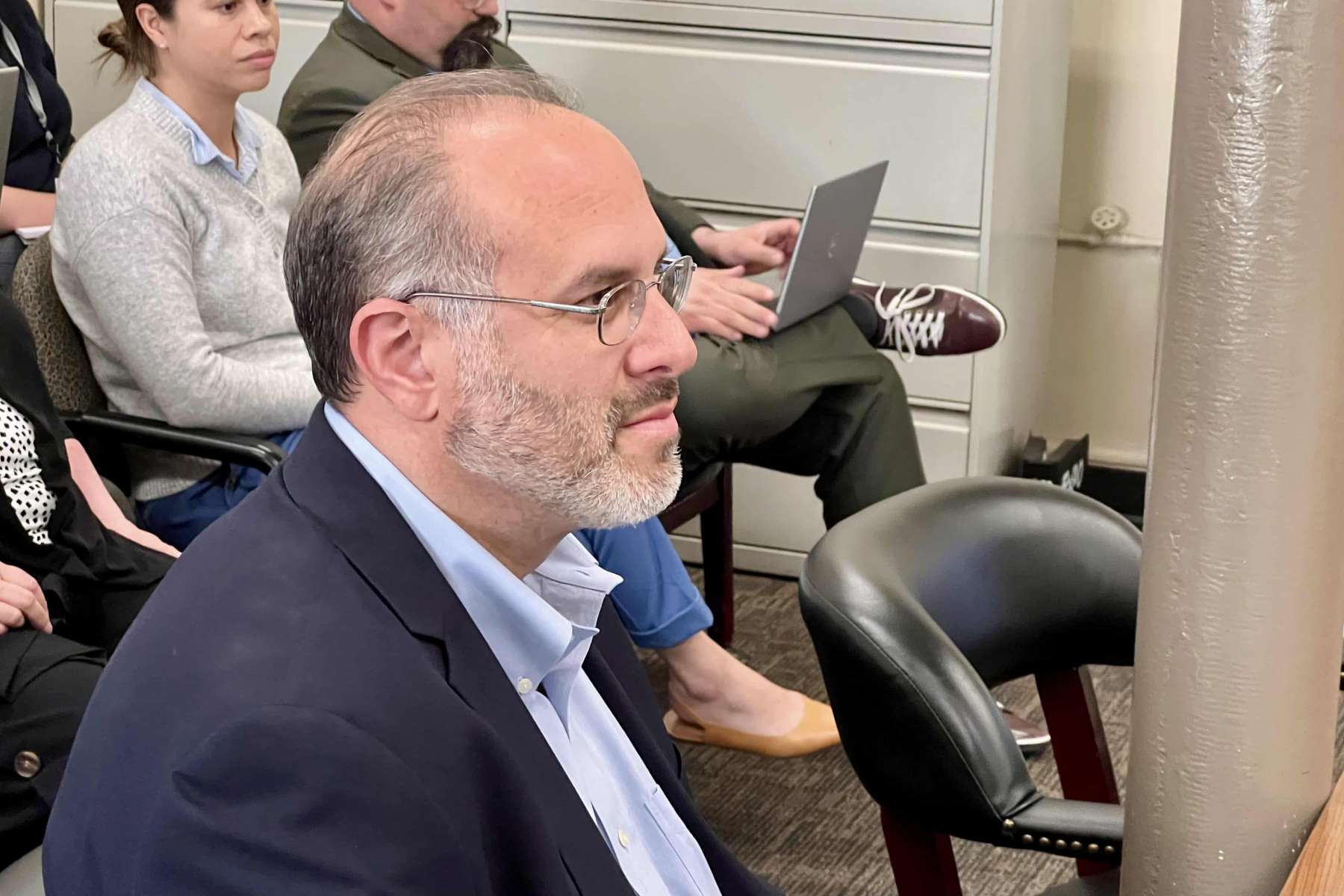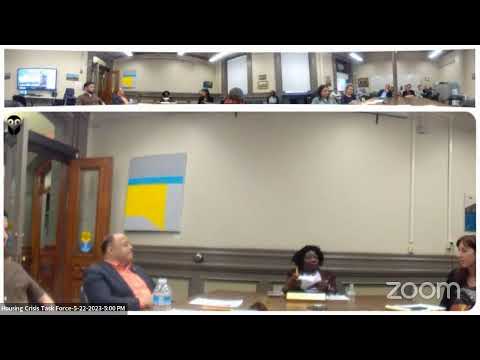Tackling the Housing Crisis: Secretary Stefan Pryor Unveils Current State and Planned Actions
Presenting to the Providence City Council, Secretary Stefan Pryor outlined the stark reality of Rhode Island’s housing and homelessness crisis. Amid mounting challenges, Pryor emphasized collaborative efforts in tackling the issue, and offered hope through initiatives to increase affordable housing and shelter capacity.
May 24, 2023, 12:29 pm
By Steve Ahlquist
Secretary Stefan Pryor from the Rhode Island Department of Housing presented a report to the Providence City Council Housing Task Force Monday evening on the current state of the housing and homelessness crisis in Rhode Island.
“It is so important that we collaborate among state, city, service industry and other stakeholder participants to get this job done because the task is enormous and our most vulnerable residents are especially counting on us,” said Secretary Pryor, prefacing his presentation.
Some key takeaways from Secretary Pryor’s presentation:
- In 2021, Rhode Island’s annual housing production per 1000 residents ranked last in the nation
- Across the state, 150,000 households are cost burdened, paying more than 30% of net income on rent and utilities
- Over the past eight years, Rhode Island has ranked second-to-last in per capita state housing spend in New England
- Rhode Island has the 17th highest per capita homelessness count
- Rhode Island has the 32nd highest per capita unsheltered homelessness count
Secretary Pryor also spoke about some of the efforts underway to fund the building of new housing, including the recently announced 1481 units of housing which includes 1200 units of “affordable” housing.
On homelessness, the Department of Housing is working to expand shelter capacity, ahead of next winter. But meanwhile, outdoor encampments are growing.
“There are,” said Secretary Pryor to the Task Force, “hundreds of Rhode Islanders who are still unsheltered.”

The City Council had concerns:
Providence City Councilmember Shelly Peterson (Ward 14) asked about the Department of Housing’s powers to seize property through imminent domain. Right-wing talking points have emerged claiming that the Department of Housing has given itself unusual powers to seize property without due process. Secretary Pryor correctly pointed out that the Department’s use of imminent domain must follow state law and procedures, which are quite thorough. That said, Councilmember Althea Graves (Ward 12) pointed out the way eminent domain was has been historically used to take property from owners in communities of color, as happened during the construction of the highway system through Providence.
One pressing concern for City Councilmember representing the south side of the city is the expansion of services for marginalized people in communities like South Providence, and the lack of neighborhood supports people in these communities receive. This lack of services is not just about people experiencing homelessness, it’s also about housed residents dealing with issues of public safety exacerbated by the availability of vital public services in the neighborhoods.
Councilmember Graves suggested that many of those experiencing homelessness in Providence are not from Providence, suggesting that caring for these people has unfairly fallen on city residents. Councilmember Graves is not necessarily wrong in this assessment – but the fault for this outcome does not fall on those experiencing homelessness, but on the policy choices made by political leaders in this state, as I detail below.
This issue came to light most clearly when West End residents received extra policing and garbage collection services while the Cranston Street Armory Warming Station was open, expanded services of a kind not available to South Providence, which has been the location of Crossroads Rhode Island, a homeless shelter, for many years. The South Providence Neighborhood Association recently released a report detailing the impacts that hosting Crossroads has on the community, and recommendations on mitigating those effects.
Toward the end of the Task Force meeting I testified based on my experience in meeting with advocates and those directly impacted by the housing crisis. I quickly ran down a series of points, and these points are not meant to be comprehensive or definitive:
- When the Armory Warming Station closed, according to Eileen Hayes at Amos House, “we were able to place about 30 folks at the motel yesterday and another 20 in other shelters. We have about 10 more folks we have to bring to motel today when we can find them and we gave about 20 tents to others.”
- One reason unsheltered people tend to congregate in Providence is because there is access to transportation via public transit, and there are services provided, like free meals.
- Another reason that people have congregated in Providence is that when the Armory opened as a warming shelter, it drew people to Providence, where they availed themselves of services – like healthcare, shelter and meals – and found employment.
- Yet another reason people have come to Providence is that mayors, from Warwick and Woonsocket and elsewhere, bulldozed encampments, and suggested people go to Providence, even offering free transportation.
- The Coordinated Entry System (CES) is the program whereby unsheltered people are placed into available shelters. With the recent influx of unsheltered people from the Armory entering the system, there has been a strain on that system, and on the ability of service providers to help. Many people who have been waiting for shelter through CES have been waiting for years.
- During the winter here in Rhode Island, people died, and people were seriously impacted by frostbite and other health issues brought on by the winter cold. In a bitter irony, people who experience worse health outcomes due to being unsheltered can find themselves placed higher on the list for available shelter due to their new health issues.
- In communities outside Providence people who have waited months and years for shelter in their area have been skipped over by people entering the CES as they leave the Armory. People being transported from Providence to Smithfield for a shelter bed not made available to an unhoused Smithfield resident, for instance, has lead to issues of distrust between clients and service providers because clients may not understand how CES prioritizes housing. [Indeed, CES being a dynamic system, taking dozens of factors into account when assigning shelter beds, means that no one fully understands why one person is prioritized over another for housing.]
- South Providence, especially around the Port of Providence, is a dumping ground for environmentally hazardous industries. It is also the location of many social service providers who care for our unhoused neighbors. The size and scale of similar industries and services cannot be found in other Providence neighborhoods due to NIMBYism. In essence, the neighborhood with the least money and power is forced to accept the majority of industries and public services.
- Worse, the impacted neighborhoods are not given the extra level of services needed to deal with the impacts of these industries and public services.







